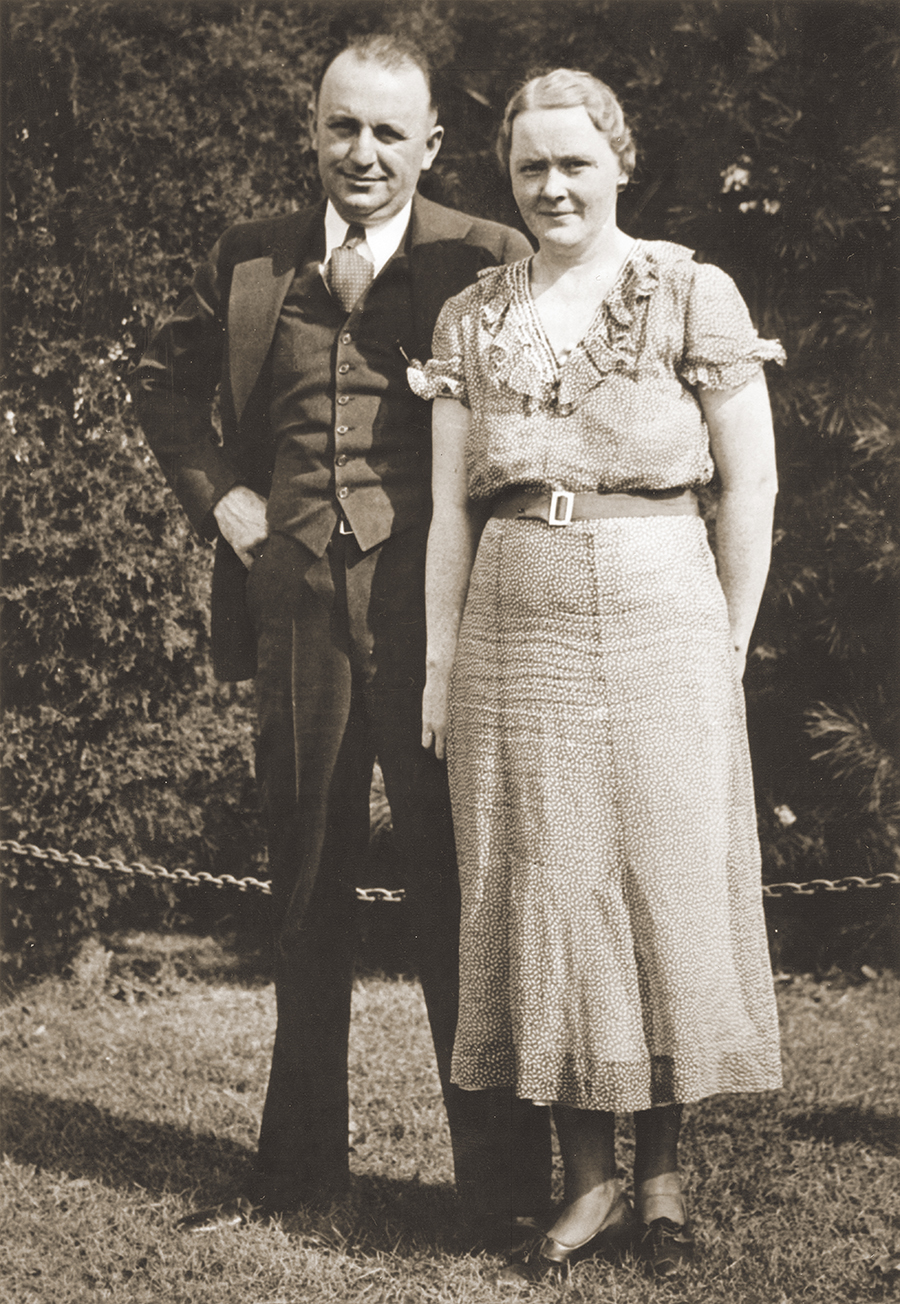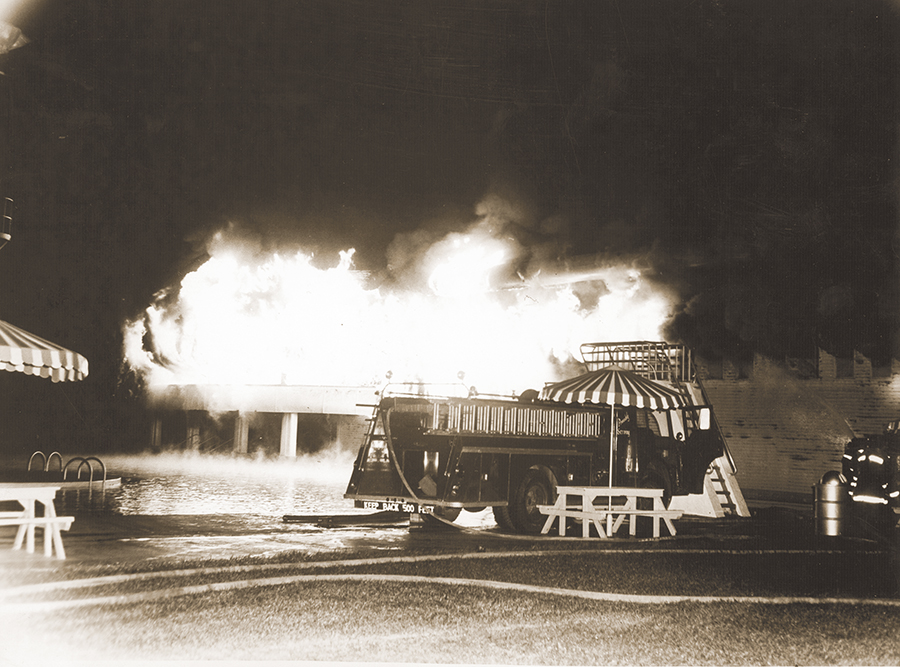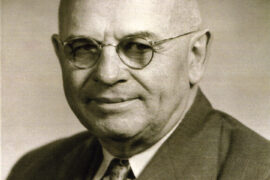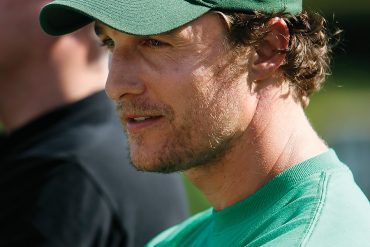Kenova’s pool, the largest in the region with more than 1.2 million gallons of water, has been an oasis from the summer heat for the last 80 years.
By Joseph Platania
HQ 55 | SPRING 2005
Eighty years after it first opened in 1925, Dreamland continues to attract summertime fun-seekers from throughout the Tri-State. The Kenova landmark is the region’s oldest and largest swimming pool.
In its heyday Dreamland had something for everyone in the way of summertime fun. Kids of all ages could practice their fives from the high boards, glide down the water slides, play table tennis, badminton, basketball and an array of other outdoor activities. Meanwhile, on Saturday nights, adults danced to the music of local bands and those from the Big Band era at Dreamland’s dance pavilion.
Today, the big pool – it takes 1.2 million gallons of water to fill it – is owned and operated by the city of Kenova. But it was originally built as a family business by a successful Kenova grocer, J.D. Booth. In an interview with writer James E. Casto – published in the Summer 1994 issue of Goldenseal magazine – retired Huntington businessman Alex E. Booth Jr. recalled what prompted his family to build the pool:
“My father had opened up a business selling ice and house coal. They had wells for the icehouse. They saw all that water going to waste, and they started thinking about businesses that used lots of water. That’s when they got interested in a pool. Ironically, despite the wells, they didn’t build it anywhere near the ice house but down on the Big Sandy riverbank.”
Dreamland – no one seems to know the origin of the name – proved an immediate success because it was conveniently located to Huntington and to Ashland, Ky. The pool soon was attracting crowds of visitors from as far away as Logan, W.Va.

The popular destination was first listed in the 1930 Huntington City Directory as “Dreamland Bathing Pool,” located at 23rd Street and Chestnut in Kenova.
Booth recalled that in its early seasons the pool was the center of some controversy:
“Kenova was – and is today – a very religious community. And the opening of the pool caused quite a commotion in some of the churches. Some people didn’t think it was right for men and women to be swimming together, although the bathing attire of that era was certainly not what you would call revealing. And then, too, some people didn’t think it was right for the pool to be open on Sunday.”
In addition to swimming, Dreamland offered tennis, handball, volleyball and shuffleboard, along with picnic facilities.
The pool is 250 feet by 125 feet, with a depth ranging from only a few inches at the shallow end to nine feet at the deep end. On busy days, long lines of people waited to use the diving boards and water slides while two concrete islands called “floats” in the middle of the pool often were crowded with bathers.
Booth explained that after his grandfather died in 1936, “the management of the pool fell to my grandmother and my father. Then, my father got involved in the coal business so didn’t have time to deal with the pool. From that point on, my mother, Roxanna, and I more or less ran it.
“I was pretty young when my father put me in charge of the chemicals we used to purify the water in the pool,” Booth continued. “We took the water straight from the Big Sandy and ran it through a settling basin. We tried drilling wells but the well water had too much iron in it.”
In the late 1930s, an open-air dance pavilion was added to the roof of the facility’s main building.
“The place could hold more than a thousand people,” recalled Booth. “We generally had a house band, but we also regularly booked the big names of that day. We had most of the greats. Glenn Miller and Benny Goodman, for example. We had Ray Anthony, long before he was famous. We had Gene Krupa, the drummer. There were girl bands on the road then and we had Ina Ray Hutton. We (also) had Bob Crosby and his Bobcats.”
Booth added that famed jazz trumpeter Louis Armstrong played at Dreamland in the late 1930s or early 1940s.

Booth recalled that World War II had little impact on Dreamland’s business. However, he states, “the toughest part, with food rationed, was getting enough to serve. But we always managed somehow. Gasoline was rationed, too, but even before the war, lots of people came to the pool by bus. The old Ohio Valley Bus Company sold a combination ticket for 75 cents that gave you your round-trip bus fare from Huntington, plus your pool admission. At least half of the people there on most weekends came by bus. There were so many of them the company had to run extra buses.”
By the late 1940s Booth’s father’s coal brokerage business took up so much time that the family sold the pool and moved to Huntington.
In April 1949, Huntington businessmen Nick Tweel, Felix Hage and Fred Salem purchased Dreamland. Eventually, Salem would become the sole owner and would operate Dreamland for more than 20 years.
During the early 1950s, Dreamland faced stiff competition from the new Olympic pool built by the city of Huntington in Memorial Park near 14th Street West and from smaller neighborhood pools. This resulted in the loss of many of Dreamland’s regular customers.
Also, many of the big Bands had stopped touring the country so Dreamland had to rely on local bands to provide entertainment at the dance pavilion.
In April 1972, there were rumors that Dreamland might be closed and its riverbank site used for a new coal-loading operation. Kenova officials, shocked at the possibility of losing such an historic attraction, began talking about buying the pool but coming up with the necessary funding was a major obstacle.

Gov. Arch A. Moore then stepped in and promised a combination of state and federal money to cover 80 percent of the purchase price if Kenova could come up with the difference.
On February 17, 1973, Kenova voters overwhelmingly approved a $100,000 bond issue to help finance Dreamland’s purchase.
Then, on the night of June 29, 1973, a roaring inferno engulfed Dreamland, gutting the threestory main building that was topped by the dance pavilion. It was one of the most devastating fires in Tri-State history as flames from Dreamland lit up the night sky. To make matters worse, the chlorine storage tanks exploded releasing fumes that struck down more than a dozen firefighters.
After a lengthy investigation, three Kenova teenagers were charged with arson in connection with the fire.
In the fire’s wake, the property had to be reappraised and the City of Kenova’s deal to purchase the pool had to be renegotiated. But undiscouraged Kenova officials pressed ahead and on November 26, 1973, presented Salem a check for $395,000.
In May 1974, the city-owned pool, refurbished by volunteers, reopened for business. Later a new bathhouse with showers, dressing areas, lockers and restrooms was completed.
As at most pools these days, insurance concerns have forced removal of the oncepopular diving boards and water slides.

Although the number of visitors today is far less than the thousands that Dreamland once attracted, Mayor Trey Morrone says Kenova is determined to keep the 28-acre site open and running.
The pool operates each summer from Memorial Day weekend to Labor Day weekend. It’s open from 10 a.m. to 6 p.m. Mondays through Saturdays and from noon to 6 p.m. on Sundays. Admission is $3 .50 for adults and $2 for children. Youngsters under three years of age are admitted free.
Morrone states that Dreamland still features live entertainment, including bands, several times during the summer. He adds that Karaoke is a popular attraction at the pool in the evenings.
Historic photographs of Dreamland are on display at Kenova City Hall and at the Kenova Historical Museum, located in a red brick house near the pool.





